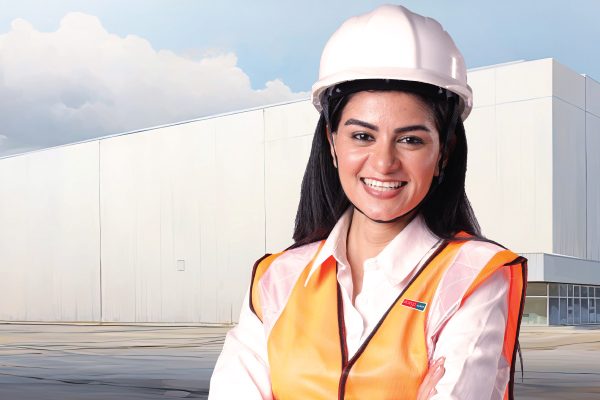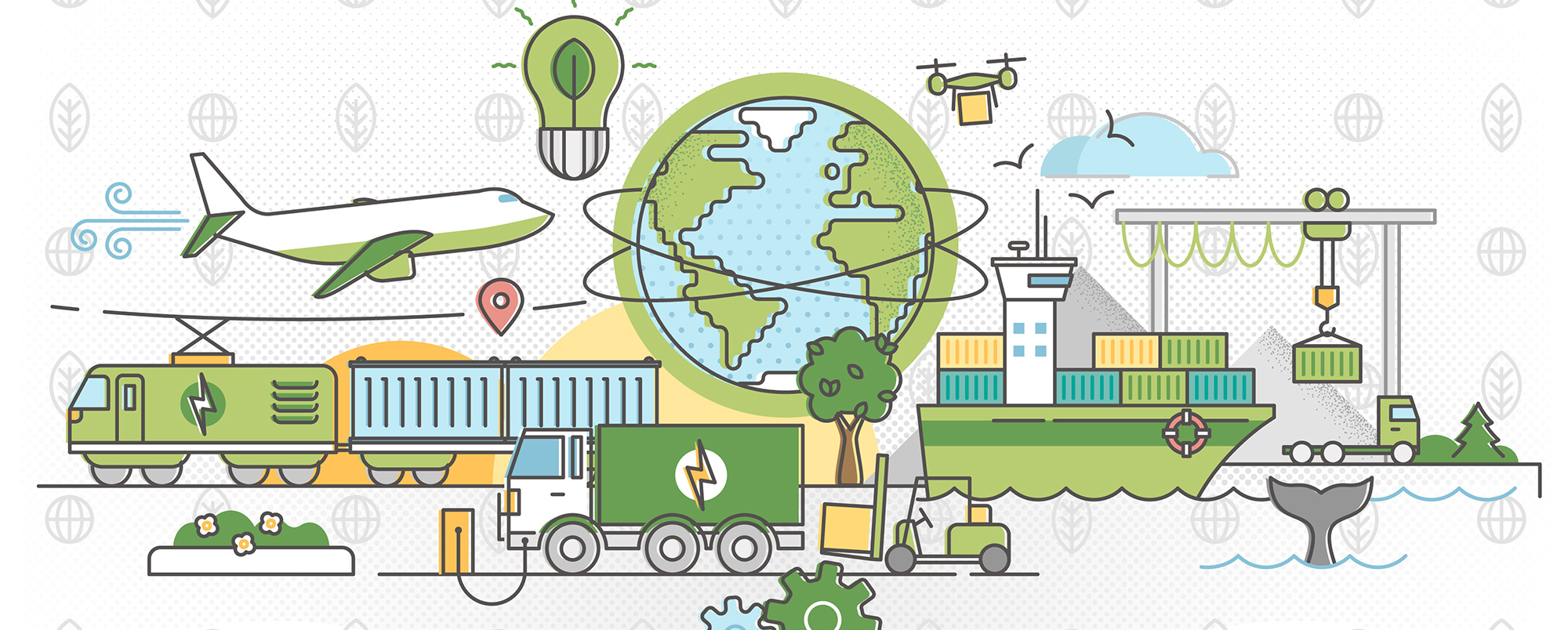For long, ‘Green’ has been a handy catchphrase for businesses and policy makers, exhibiting their commitment towards preserving environment, by prefixing it with almost everything that deals with saving the environment. And the logistics sector is no exception to this; after all, it is one of the major contributors to environmental pollution – making the case for giving serious consideration to ‘green logistics’.
Any discussion on green logistics remains confined to transportation even though logistics includes facilities like warehousing, transport terminals, packaging, distribution, material handling and even disposal. If we avoid the fallacy of equating logistics with transportation, only then we can understand the actual environmental impact of logistics activities. In fact, even as logistics moves goods within supply chains, the environmental impact is much beyond the oft-maligned GHG emissions from freight and passenger transport: warehouses pose a threat to safety of the neighbourhood, more so, if stocked with hazardous goods; terminals at ports, airports and stations add to noise pollution as vehicles and cranes move; discarded packaging sullies the landscape; improper waste disposal contaminates land and water.
Making logistics services greener, one step at a time
For resuscitating and implementing green logistics in India, we need to address the issue at three levels: public policy, business and individual—these three tiers interact with and influence one another. But no cut-and-dried or easy solutions are in sight. Government intervention for right pricing, incentivizing, laying down regulations and enforcing them is imperative.
Indian logistics industry players are yet to appreciate that green logistics is compatible with their bottom-line. Fuel efficiency, payload management, routing and driving techniques matter a lot in saving costs. For small trucking companies masquerading as logistics operators, performance metrics for monitoring these aspects are alien practices. Going green and being greener than your competitors is still not an advantage in the Indian logistics industry due to consumer apathy. The reverse logistics industry that takes care of recovery — retrieval of parts, recycling of products and disposal of packaging waste — is almost non-existent in India.
With the rise of e-commerce, there is a concomitant rise in packaging waste. Though many e-retailers no longer provide paper receipts to enhance their green-image, they still do not provide consumers with the option of disposing of packaging material, even at a nominal cost. Mandatory legislation regarding these aspects like in the E. U. would prod both consumers and businesses in the right direction and push towards a ‘circular economy’, while contributing to the Swachh Bharat Abhiyan as well.
Eco-friendly warehouses – an upside for the logistics industry and our planet at large
There are a number of ways in which we can make our warehouses more sustainable and efficient.
- Sustainable Lighting: Modernized LED lighting proves adequate illumination at a resourceful rate. It also reduces usage and consumption rates, making is better for the environment. Additionally, solar powered lighting can help reduce energy consumption and save costs.
- Smartly located inventory: Smartly located inventory requires workers to do less and thus bolsters efficiency and productivity. As a result, personnel have more time to commit to other necessary tasks and projects get done faster. Profitability might also skyrocket thanks to this ideology.
- Energy management systems: Energy management systems autonomously oversee all the utilities one facility uses without much human intervention required. With the integration of timers, thermostats, and gauges for all forms of electricity, gas, heat, and water, energy management systems derive the best practices to use what is needed without excessive waste. This is a fundamental component of eco-friendly systems, because it helps to businesses lower usage of renewable resources and save costs.
- Electric forklifts: Electric / battery forklifts eliminate the need for gas and oil. Not only is this good for the environment but it is also safer for employees. Personnel no longer need to expose themselves to dangerous chemicals such as battery acid or anti-freeze liquid. This can slash the level of incidents related to hazardous materials handling, which, in turn, drives up the bottom line.
Warehouse automation – a step towards greener warehousing solutions
When it comes to creating sustainable value, there are several practices that warehouses can implement. Some such approaches include automating both warehousing solutions and management processes to increase energy efficiency, and optimizing warehouse design.
In addition to implementing Warehouse Management Systems (WMS), it would do well for companies to also incorporate other automated solutions including order picking technologies (pick-to-light technology, voice technology, sortation systems, etc.), bar-coding, Radio Frequency Identification (RFID), and Automated Storage and Retrieval Systems (ASRS) to achieve a sustainable warehousing system.
By automating labor-intensive processes, companies can achieve financial and business management sustainability benefits in the long run as improved inventory visibility can increase product accuracy and even influence customer satisfaction. For example, companies switching to bar-coding and RFID technologies will inevitably see a reduction in paper consumption as they adopt a largely digital approach, thus lending a hand to environmental sustainability along the way.
A big concern in the logistics industry, traceability can also be better accounted for with automated warehousing systems. In the event of a product recall, the WMS will be able to provide companies with necessary details for efficient recall. Sustainable value is achieved as companies see less waste in terms of resources, time, and energy required to trace and recover products.
In the business landscape where competition is rife and there is an ever-present threat to survival, an ASRS could potentially help manufacturers cope with rising business pressures, increasing labour costs, intensified calls for safety, and the need for tighter security. An ASRS is particularly useful in minimizing the warehouse footprint as it offers innovative storage solutions. Utilizing vertical space within a warehouse, ASRS are capable of handling and processing a higher volume of orders in a given period of time and space. ASRS can also help companies avoid unfavorable environmental impact that may result from constructing a new warehouse.
Energy efficiency for sustainable, cost-effective warehouses
Warehouses consume a large amount of energy within a regular logistics supply chain. However, automated warehousing solutions can be responsible for significant amounts of energy savings as they can function in both darkness and in non-heated environments. This is a stark contrast to conventional warehouse equipment that has high energy consumption levels and high operating costs. For day-to-day operations in an automated warehouse, it is advisable to instill ‘lights-out operation’ as lights are generally required only during routine maintenance checks. Automated technologies such as stacker cranes can function independently without supervision, so it is unnecessary to cater for this expenditure.
Warehouses that integrate green warehousing practices such as daylighting technology (skylights, photocell sensors, etc.) can help companies to save energy costs in the long run. Some methods that can be used include fitting warehouses with solar panels or light emitting diode (LED) lighting, power regeneration by converting braking forces from automated equipment to electricity, and recovering heat that is generated from cold storage systems. Other methods include switching to natural ventilation instead of electrically-run ventilation, and even adjusting the speed of conveyors and palletisers so that when left unused, this equipment can run at a slower pace or be turned off.
In implementing energy-efficient warehousing measures, more than 20% of cost savings can be achieved. Companies adopting green warehousing practices can then work towards building a financially and environmentally sustainable business.
Optimizing warehouse design
Careful planning of the warehouse layout is not only crucial for companies to maximize workflow efficiency and remove unnecessary steps within the warehousing process, but it also helps to ensure that the warehouse can integrate new functions easily in the future. Companies should aim to maximize their cube-wise space – length, width, and height – to fully optimize the warehouse for efficient material handling, order picking and storage processes, accommodating personnel movement, and handling of equipment.
When constructing the layout, companies need to collect operation data on actual facility throughput, information on warehouse structure requirements such as loading and levelness, precision data on floor flatness, and even weather information as it relates to possible impact on warehouse structure durability. By incorporating these factors into the warehouse design, companies can then achieve energy efficiency and increase productivity.
Conclusion
In the days to come, energy savings in every warehouse will be the new thinking point for decision makers to delve upon. While it is clear that companies who incorporate sustainability initiatives in their warehouses may enjoy financial and environmental sustainability, it must be said that sustainability needs to be strategically managed and given top management support. And as a significant component in supply chains worldwide, the warehouse can be a competitive asset for businesses to achieve both financial and environmental sustainability objectives in the long term.














